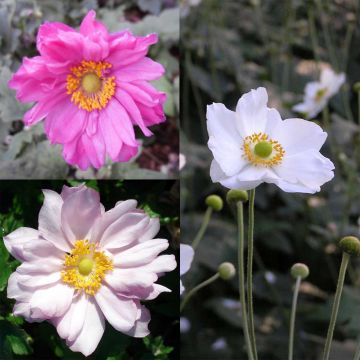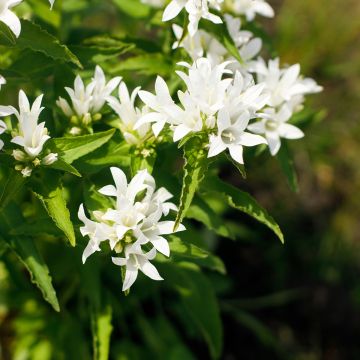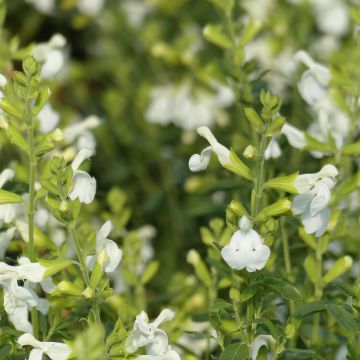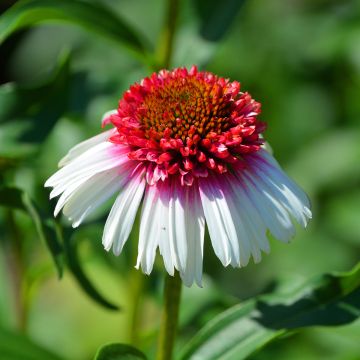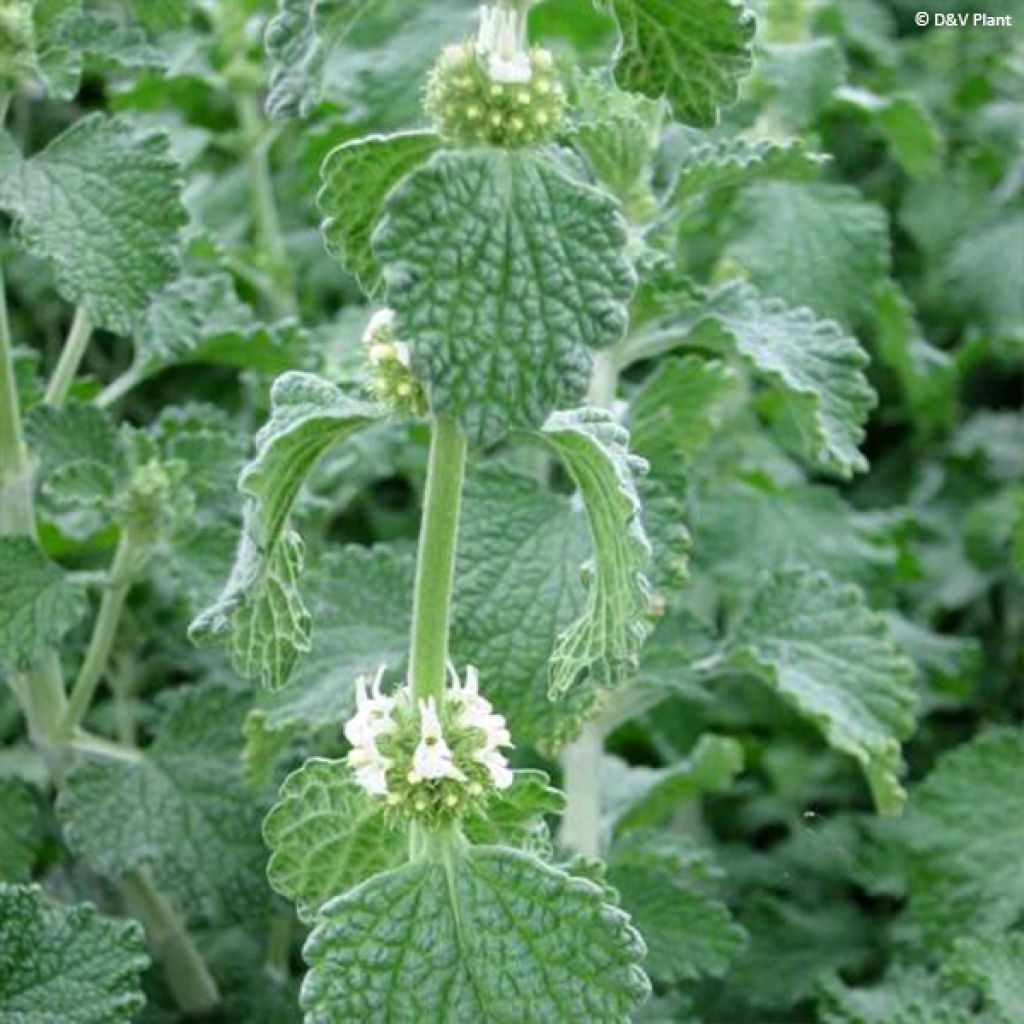

Marrubium vulgare - Marrube blanc, marrube commun
Marrubium vulgare
Marrubium vulgare
Horehound, White Horehound, Common Horehound, Hound's Bane, Marrube, Marvel, Maw-roll
Special offer!
Receive a €20 voucher for any order over €90 (excluding delivery costs, credit notes, and plastic-free options)!
1- Add your favorite plants to your cart.
2- Once you have reached €90, confirm your order (you can even choose the delivery date!).
3- As soon as your order is shipped, you will receive an email containing your voucher code, valid for 3 months (90 days).
Your voucher is unique and can only be used once, for any order with a minimum value of €20, excluding delivery costs.
Can be combined with other current offers, non-divisible and non-refundable.
This plant carries a 6 months recovery warranty
More information
We guarantee the quality of our plants for a full growing cycle, and will replace at our expense any plant that fails to recover under normal climatic and planting conditions.
Description
Marrubium vulgare, better known as white horehound or common horehound, is an indigenous plant related to sage (Lamiaceae family). It is a very hardy perennial that requires little water. Its thick, wavy, whitish and cottony leaves release a fairly strong odour reminiscent of thyme when crushed. Its long-lasting flowering is white and rather inconspicuous, but it is popular with bees. In traditional medicine and phytotherapy, white horehound is used for respiratory ailments. It thrives in the sun, in any well-drained soil, even limestone and dry in summer.
White horehound is native to southern Europe, North Africa, and Asia. Depending on the region, it is also known as common horehound or Virgin herb. In nature, it is found on the edges of roads, in dry meadows and wastelands, in the sun, on often limestone and well-drained land. The plant, which resembles a greyish mint, forms a clump of leafy stems reaching 30 to 50cm (12 to 20in) in height. These upright stems with square cross-sections are covered with a greyish felting. They bear thick, wavy, whitish and cottony leaves, measuring 2 to 5cm (1 to 2in) long. The foliage is aromatic when crushed. The nectar and honey-producing flowering, like that of many Lamiaceae, extends from May to September. Small bilabiate white flowers bloom in the axils of the small leaves that line the upper part of the stems. The deciduous foliage is absent in winter.
Horehound is a lovely rockery, field, or naturalistic plant. This perennial pairs well with lavender, thyme, common sage, oregano, and other savoury herbs. All these aromatic plants thrive in sunny, well-drained soils, even poor, limestone and dry ones. In phytotherapy, it is used in infusion, decoction, or macerated in wine. Its cooked leaves are edible, but their bitterness is not appreciated by our palate.
Report an error about the product description
Harvest
Plant habit
Foliage
Planting and care
White horehound appreciates well-drained, not too rich, slightly alkaline soils, that are slightly moist to dry. Plant it in full sun. Plant in spring, from March to June. It can be grown in open ground, provided it is given well-drained, slightly rocky or sandy soil that does not retain too much water.
In open ground: Space the plants 50cm (20in) apart in rows and 80cm (32in) between rows. Dig a hole (3 times the volume of the root ball), place the root ball and cover with fine soil. Firmly press and water. Hoe and weed regularly, especially at the beginning of cultivation.
In pots: Place a layer of gravel or clay balls at the bottom of the pot to facilitate drainage. Fill the pot with a mixture of potting soil, garden soil, and sand. Place the root ball, cover with soil, and firm. Water regularly, but without excess.
During cultivation, water moderately, as horehound is sensitive to excess moisture. In pots, watering should be regular but spaced out, and water should not stagnate in the saucer.
At the end of winter, prune lightly to maintain its bushy habit. Remove faded flowers if you want to avoid spontaneous sowing.
Cultivation
Care
Intended location
Planting & care advice
This item has not been reviewed yet - be the first to leave a review about it.
Similar products
Haven't found what you were looking for?
Hardiness is the lowest winter temperature a plant can endure without suffering serious damage or even dying. However, hardiness is affected by location (a sheltered area, such as a patio), protection (winter cover) and soil type (hardiness is improved by well-drained soil).

Photo Sharing Terms & Conditions
In order to encourage gardeners to interact and share their experiences, Promesse de fleurs offers various media enabling content to be uploaded onto its Site - in particular via the ‘Photo sharing’ module.
The User agrees to refrain from:
- Posting any content that is illegal, prejudicial, insulting, racist, inciteful to hatred, revisionist, contrary to public decency, that infringes on privacy or on the privacy rights of third parties, in particular the publicity rights of persons and goods, intellectual property rights, or the right to privacy.
- Submitting content on behalf of a third party;
- Impersonate the identity of a third party and/or publish any personal information about a third party;
In general, the User undertakes to refrain from any unethical behaviour.
All Content (in particular text, comments, files, images, photos, videos, creative works, etc.), which may be subject to property or intellectual property rights, image or other private rights, shall remain the property of the User, subject to the limited rights granted by the terms of the licence granted by Promesse de fleurs as stated below. Users are at liberty to publish or not to publish such Content on the Site, notably via the ‘Photo Sharing’ facility, and accept that this Content shall be made public and freely accessible, notably on the Internet.
Users further acknowledge, undertake to have ,and guarantee that they hold all necessary rights and permissions to publish such material on the Site, in particular with regard to the legislation in force pertaining to any privacy, property, intellectual property, image, or contractual rights, or rights of any other nature. By publishing such Content on the Site, Users acknowledge accepting full liability as publishers of the Content within the meaning of the law, and grant Promesse de fleurs, free of charge, an inclusive, worldwide licence for the said Content for the entire duration of its publication, including all reproduction, representation, up/downloading, displaying, performing, transmission, and storage rights.
Users also grant permission for their name to be linked to the Content and accept that this link may not always be made available.
By engaging in posting material, Users consent to their Content becoming automatically accessible on the Internet, in particular on other sites and/or blogs and/or web pages of the Promesse de fleurs site, including in particular social pages and the Promesse de fleurs catalogue.
Users may secure the removal of entrusted content free of charge by issuing a simple request via our contact form.
The flowering period indicated on our website applies to countries and regions located in USDA zone 8 (France, the United Kingdom, Ireland, the Netherlands, etc.)
It will vary according to where you live:
- In zones 9 to 10 (Italy, Spain, Greece, etc.), flowering will occur about 2 to 4 weeks earlier.
- In zones 6 to 7 (Germany, Poland, Slovenia, and lower mountainous regions), flowering will be delayed by 2 to 3 weeks.
- In zone 5 (Central Europe, Scandinavia), blooming will be delayed by 3 to 5 weeks.
In temperate climates, pruning of spring-flowering shrubs (forsythia, spireas, etc.) should be done just after flowering.
Pruning of summer-flowering shrubs (Indian Lilac, Perovskia, etc.) can be done in winter or spring.
In cold regions as well as with frost-sensitive plants, avoid pruning too early when severe frosts may still occur.
The planting period indicated on our website applies to countries and regions located in USDA zone 8 (France, United Kingdom, Ireland, Netherlands).
It will vary according to where you live:
- In Mediterranean zones (Marseille, Madrid, Milan, etc.), autumn and winter are the best planting periods.
- In continental zones (Strasbourg, Munich, Vienna, etc.), delay planting by 2 to 3 weeks in spring and bring it forward by 2 to 4 weeks in autumn.
- In mountainous regions (the Alps, Pyrenees, Carpathians, etc.), it is best to plant in late spring (May-June) or late summer (August-September).
The harvesting period indicated on our website applies to countries and regions in USDA zone 8 (France, England, Ireland, the Netherlands).
In colder areas (Scandinavia, Poland, Austria...) fruit and vegetable harvests are likely to be delayed by 3-4 weeks.
In warmer areas (Italy, Spain, Greece, etc.), harvesting will probably take place earlier, depending on weather conditions.
The sowing periods indicated on our website apply to countries and regions within USDA Zone 8 (France, UK, Ireland, Netherlands).
In colder areas (Scandinavia, Poland, Austria...), delay any outdoor sowing by 3-4 weeks, or sow under glass.
In warmer climes (Italy, Spain, Greece, etc.), bring outdoor sowing forward by a few weeks.










































